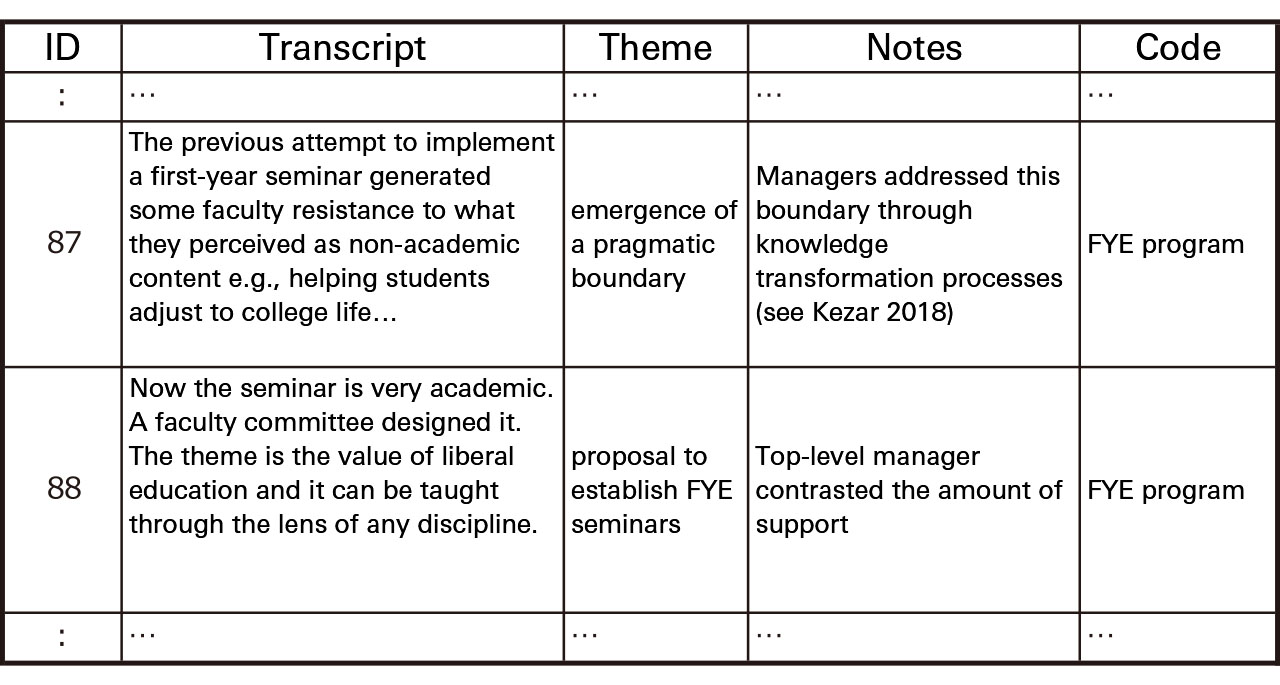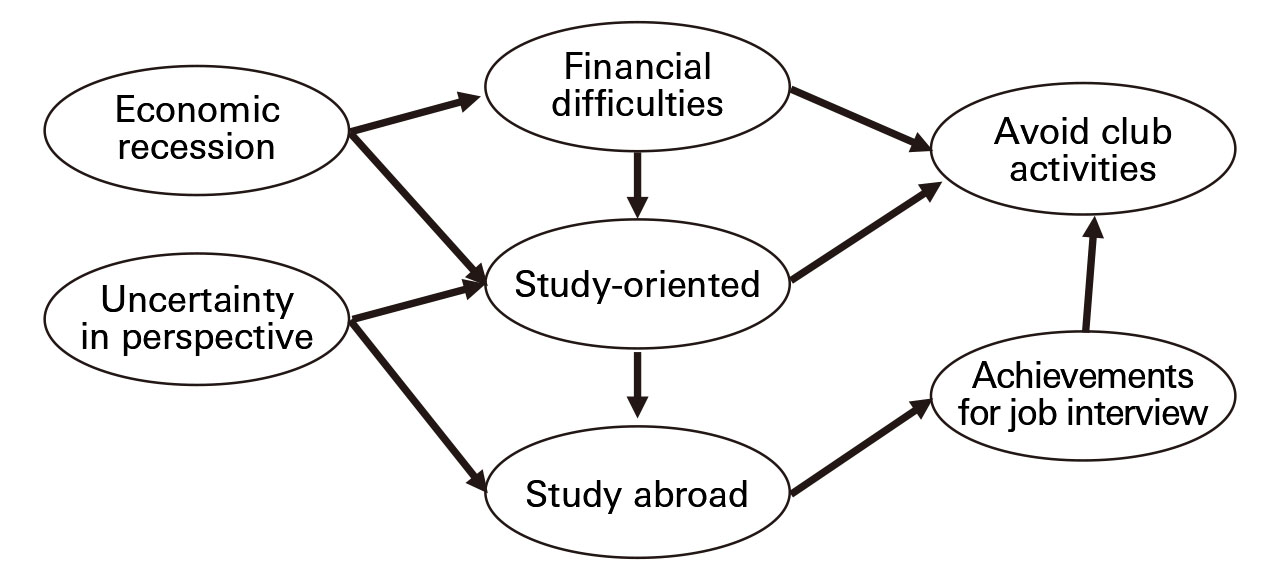Creating a verbatim transcript
In preparation for summarizing the data, create a verbatim transcript. A verbatim transcript is something where you convert the audio recording of an interview into text. When creating a verbatim transcript, you should be mindful of the following.
- Create the transcript immediately after the interview: Try to create the verbatim transcript within 24 hours of the interview. As time passes, people tend to forget their thoughts and feelings experienced during the interview. Since these will affect the quality of the analysis and interpretation afterwards, it is recommended to begin creating the verbatim transcript immediately after the interview.
- Do not summarize what was said: As much as possible, create the verbatim transcript using the exact words as they are spoken. Even words such as “um...” or “well...,” or considerable silences should be included in the verbatim transcript if these occurred while the speaker is deeply thinking about or pondering their answer.
- Place a mark on the sections that could have significance: When you create the verbatim transcript, mark the sections that you think will be important for your later analysis. Doing so will help you with organizing your work when you review the transcript later.
- Read the completed verbatim transcript many times: Once the verbatim transcript is created, before commencing with the analysis or interpretation, read the verbatim transcript several times. As you read it, you should realize that the verbatim transcript text can be divided into multiple blocks.
- Back up the data: Once you have created the verbatim transcript, save a copy of the text data to multiple locations such as removable media or cloud storage. This way, easy recovery is possible in cases where the data becomes corrupted as you are working on it.
Assigning codes to the text
When you code your data, it is useful to use spreadsheet software such as “Excel.” The standard method for coding is as follows.
- Create the columns for number, comment, title, summary, and code: If you assign sequential numbers to each block, these will become helpful for understanding the flow of the story when you group together similar codes later.
- Divide the utterance into small blocks: Create minimum sized blocks that comprise a story, and place them in the “comment” cells.
- Put a title: Make a title that succinctly expresses the content of each comment.
- Note down points of similarities and differences with previous studies: Take notes on the information from academic literature that might help to explain the comments and titles.
- Write down concepts that help to explain the comment: Enter keywords, labels, or concepts that can, as a code, express the comment abstractly based on the contents of comment, title, and summaries. It is preferable to write these using the concepts used in previous studies. This code may be provisional, and can be reviewed and renamed later. In addition, there will be many cases where the same code is entered in multiple cells.
It is not necessarily the case where coding can be applied to all comments. There are cases where, by making a block of comment larger, coding becomes easier. Thus, when you are having difficulties in coding, you should consider changing the block sizes.

Summarizing the data using a storyline
After the first person’s data is coded, continue the process of coding for the second and third persons as well. Once new codes cease to appear, it can be considered that a sufficient amount of codes has been collected. Then you can move to the stage of summarizing the information into a storyline. The basic procedure is as follows.
- Group similar codes together, and put a category name to them: You may use post-it notes with only the code written on them to classify the codes using the KJ method※.
- Depict the causal relationships existing between the categories: While focusing on which events occur first, and which events occur later in the time axis, use a chart to express the relationship between categories for creating a storyline.
- Consider whether the storyline you created could become a research hypothesis for your research theme: Consider the difference between the things derived from the storyline and those defined in previous studies. In addition, consider whether these could become a new hypothesis, but also check whether the storyline you created is too obvious or common sense.

- KJ method: Of the numerous post-it notes with only the code written on them, organize similar notes into a number of groups, assigning titles to each group. After this, use a chart to illustrate the reciprocal/inclusive-relations between the groups, and summarize the relationship between groups.
Obtaining help from others
Regarding coding and the creation of storylines, unless you have sufficient knowledge of the research topic, there are cases where coding can become erroneous or skewed. If possible, obtain support from others who are knowledgeable about the subject matter, and ask them to code the same data as well. If a similar code or storyline is created, the result can be considered to be valid. On the other hand, if the same result is not obtained, it may be necessary to further acquire the knowledge and theoretical understanding required for interpretation.
- Recommended Readings
- Braun, V. and Clarke, V. (2006) Using thematic analysis in psychology. Qualitative Research in Psychology, 3(2), 77-101
- Boyatzis, R. (1998) Transforming Qualitative Information: Thematic Analysis and Code Development, SAGE Publications
- Issue |
- Institute of Liberal Arts and Sciences & Center for the Studies of Higher Education
- First edition |
- 2018.3.20
- Author |
- Nakajima, Hidehiro